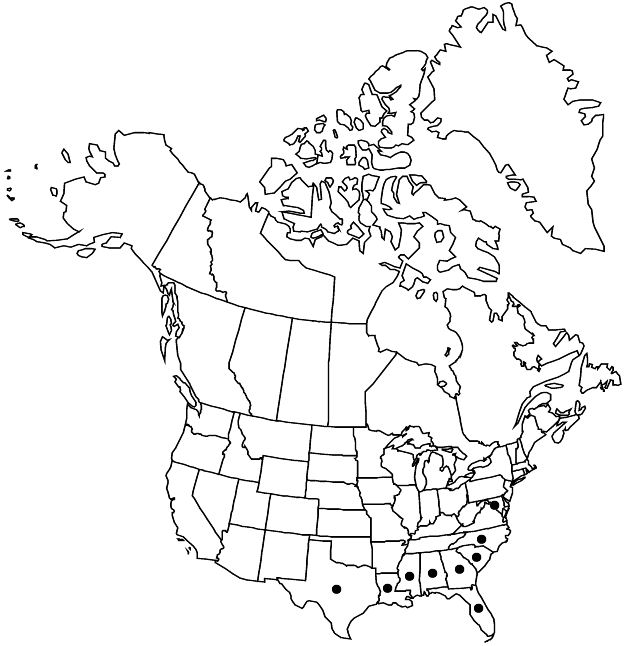Linum floridanum
Trans. Acad. Sci. St. Louis 5: 13. 1887.
Herbs, perennial, 20–110 cm, glabrous. Stems erect, usually unbranched, sometimes branched from base. Leaves: proximal usually opposite, distal alternate, rarely all alternate, appressed-ascending; stipular glands absent; blade linear-oblanceolate or oblanceolate, 10–20 × 1–3.2 mm, margins entire, not ciliate, apex sharply acute. Inflorescences corymbs. Pedicels 0.5–3.5 mm. Flowers: sepals persistent, narrowly lanceolate, outer sepals 2.5–4.5 mm, inner somewhat shorter, broader than outer, margins not scarious, inner conspicuously glandular-toothed, outer entire, apex acute; petals lemon yellow, obovate, 5.5–9.5 mm; stamens 2 mm; anthers 0.5–1.5 mm; staminodia absent; styles distinct, 2–4.5 mm; stigmas capitate. Capsules pyriform or ovoid, 2–3.4 × 2–3 mm, apex obtuse or minutely 5-apiculate, dehiscing freely into 10, 1-seeded segments, segments persistent on plant, false septa nearly complete, proximal margins not ciliate. Seeds 1.6–2.5 × 0.7–1.2 mm.
Distribution

Ala., D.C., Fla., Ga., La., Miss., N.C., S.C., Tex., West Indies (Jamaica).
Discussion
Varieties 2 (2 in the flora).
Linum floridanum occurs only on the coastal plain. Leaves of the species are firm and opaque, and the veins are not shown in transmitted light. All parts of its flower are yellow except the anthers, which may have wine red coloring; the corolla is nearly rotate, and the styles are spreading.
Selected References
None.
Key
| 1 | Anthers 0.5–1.2 mm; capsules pyriform, 2–3 mm, walls relatively thin, apex obtuse. | Linum floridanum var. floridanum |
| 1 | Anthers 1–1.5 mm; capsules ovoid, 2.8–3.4 mm, walls relatively thick textured, apex minutely 5-apiculate. | Linum floridanum var. chrysocarpum |